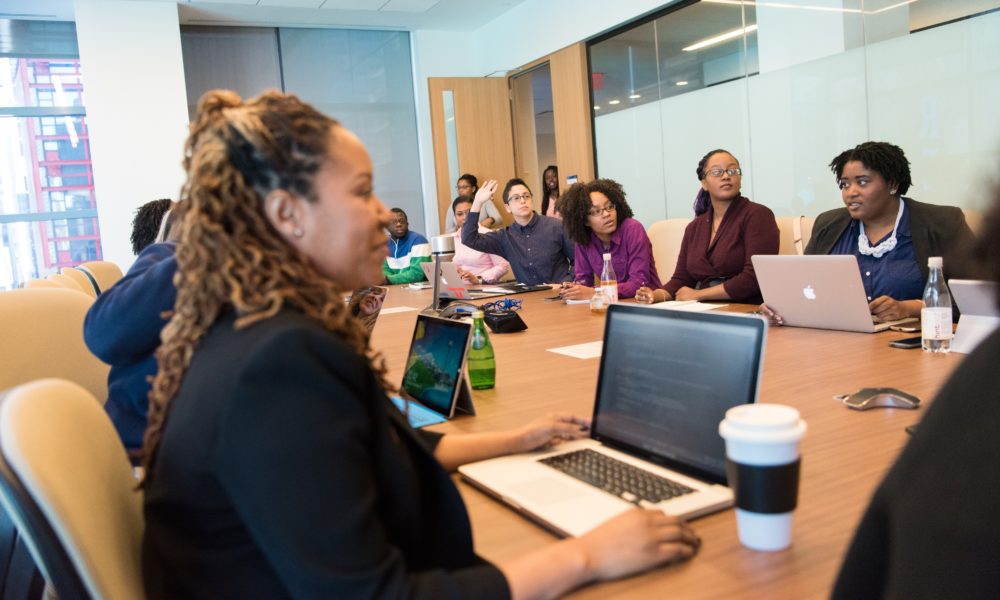Turning Learning into Action: Ensuring Transfer of Knowledge to the Workplace
3.2K Views | 11 Min Read
Your sales readiness program has just finished: you have delivered the information, taught learners the skills, and completed all of your scheduled training sessions. Your work is done, right?
As tempting as this seems, some of your most important work is just beginning. One of the most crucial elements of sales readiness programs is to ensure that the learning transfers to action in the workplace, and further, that the action is producing the desired outcomes.
Through informal and social reinforcement, ongoing learning and follow-ups, coaching and mentoring, and effective assessments and evaluations, sales enablement practitioners can both infuse knowledge and skills in the workplace behavior and analyze the impact of that behavior on performance.
Informal & Social Reinforcement
Ninety percent of what people learn is acquired informally on the job. As Elaine Biech explains in her book, The Art and Science of Training, this breaks down into two key areas: 70% is from hands-on experience (informal learning) and 20% is from developmental interactions (social learning).
The remaining 10% of learning occurs during formal learning experiences, such as a training program. Together, these three components make up what is known as the 70-20-10 framework – and sales enablement needs to focus on each to both teach and reinforce knowledge.
The problem is that many sales readiness programs today focus solely on formal learning, which accounts for the smallest fraction of how people absorb information. In addition to formal education, consider ways you can create opportunities for social and informal learning to support the 90% of learning that occurs outside of the classroom:
- Social Learning:
- Facilitate a peer mentorship program
- Create an online group for professional networking
- Invite top performers to share best practices related to the topic covered in the learning experience
- Curate case studies and lead discussions to debrief the approaches
- Informal Learning:
- Partner with managers to create assignments for participants that will challenge them to flex new muscles
- Encourage participants to seek out opportunities to stretch beyond typical job requirements
- Support managers by providing questions to use in coaching and one-on-one sessions
“What we’ve done is we’ve met the field where they are, we’ve taught them something new, we have given them the opportunity to socialize and discuss that, and then over time we have embedded a methodology that allows them to solve issues outside of what we just talk about,” said John Dougan, director of global sales and productivity at Workday.
Ongoing Learning & Follow Up
While effective learning requires informal, hands-on experiences with peers, consistent and formal reinforcement from sales enablement on an ongoing basis is also important to ensure the long-term transfer of learning. By providing support and follow-ups after learning sessions, sales enablement can help remove on-the-job obstacles and bridge the gap between knowledge and action.
Below are a few examples of ways that sales enablement can follow up with participants after sales readiness programs to support ongoing learning.
- Create a channel for sharing related news or resources. For example, send interesting articles, videos, or podcasts about the topic through an email chain or instant messaging system and encourage participants to share their thoughts about them.
- Leverage social media. Consider hosting a Twitter live chat where you propose a question and facilitate a conversation across teams and geographies.
- Launch a book club to continue learning. Invite all participants to join and meet informally once a month to discuss. This can occur virtually as well through a webinar or call.
- Produce a podcast to showcase success stories. Interview participants about how they leverage the training or use their new skills in their day-to-day, highlighting lessons learned or stories resulting in wins.
“It makes training really stick,” said Anna Cockell, head of enablement at Envoy. “So, if you’re just going in and you’re planning a big training initiative…[ensure] there is a mechanism to make sure that the repetition is there, that the reps are getting that follow-up that they need.”
Coaching & Mentoring
Through thoughtful, dedicated coaching and mentoring, sales reps can get the tailor-made support they need to improve skills and meet competency expectations.
While most organizations have some level of sales readiness through training, onboarding, or other workshops, coaching is less common and is often a neglected area of focus for sales enablement. As the Sales Enablement Analytics 2019 report found, 42% of respondents either have ad hoc coaching or no regular coaching sessions at all in their organizations.
Coaching and mentoring are critical ways to enhance knowledge learned in sales readiness programs and ensure it is being applied in the workplace. But to do that, it needs to be consistent.
“Sales managers on average report giving sales coaching three to four hours per month,” said Jenna Cronin, director of sales enablement at Unbabel. “Sales reps report receiving one hour per month. So, when you ask your manager, ‘are you coaching your reps?’, they say, ‘oh, I talk to my people all the time’. Well, okay, but that wasn’t the question. We need to define what it is and maybe give them some assistance with those agendas, or what that looks like.”
Consider providing a framework for managers or other mentors to effectively coach the skills taught during the readiness program, such as the below:
- Prepare: ask the sales rep to complete a prep form to outline key areas to discuss and high-level progress updates. Sales reps then send this form to the manager/mentor to review prior to the session so that each party enters with clear objectives for the discussion.
- Confirm: verbally confirm expectations for the session at the onset.
- Discuss: managers/mentors ask probing questions and listen carefully to responses from the sales rep. The balance should be 80/20, with sales reps speaking for approximately 80% of the conversations and managers/mentors contributing the remaining 20%. Provide sample questions for managers/mentors to guide the conversations effectively.
- Action: both parties should define and agree on clear action items to take following the conversation.
- Follow Up: the manager/mentor will follow up on the defined action items at a regular cadence.
This helps control the quality of coaching from one mentor to the next, and makes it easy for everyone to prepare and fully participate in each session because they will know what to expect. By supporting managers and mentors through the coaching process, sales enablement can ensure that coaching reinforces the right knowledge and skills in day-to-day activities.
Assessments & Evaluations
Measuring whether or not learners gained knowledge as the result of a sales readiness program is essential to understand if the program met its objectives. But it’s important to note that not all evaluations are created equal.
Many of us fall into what is called the “fluency trap”, where we cram to learn something quickly to perform on a quiz or exam, but we then forget that information shortly after. When done right, evaluations can serve as a form of learning, giving our minds an opportunity to remember information, apply what it already knows, and sometimes fail and learn from mistakes.
To reach this, evaluations need to extend beyond surface-level understanding and dig deeper into the behavioral impact of the program. The Kirkpatrick Model provides a framework to analyze the impact of a sales readiness program across four levels, from simplest to most complex: reaction, learning, behavior, and results. Sales enablement practitioners should leverage all four levels to paint a full picture of how learning transfers to impact.
Reaction: learner attitude toward the training. Use satisfaction surveys to gauge the perception of the program and content. This can be used to refine the subject matter and delivery of the topics covered, or follow up on areas that might be more complex.
Learning: knowledge and skills learned. Conduct a pre-test prior to learning as well as a post-test and compare results. Pre-tests can also help prime learners to notice important concepts throughout the program, thus improving retention. Hands-on assessments through situational interviews or role-plays also help show how learners can apply concepts to scenarios outside of the classroom.
Behavior: changes in execution and implementation of skills. Observe participants onsite to see whether skills and knowledge are being applied. Partner with managers to consistently monitor behavior and reinforce it in coaching sessions and performance reviews.
“Based on what we’re seeing in evaluations and observations, we will provide a series of recommendations, whether it is coaching approaches or reinforcement content, that managers can then go on and recommend to reps to help them improve in those areas where they are deficient,” said Glenn Clark, director of sales enablement at Smartsheet.
Results: quantifiable results that demonstrate business impact. Work with cross-functional partners to gather data and track metrics identified as goals for the program with leadership. For example, these might include things like employee engagement, employee retention, customer service ratings, and more.
Sales enablement’s responsibility to sales readiness is more than just teaching knowledge and skills in a learning experience. It is also to ensure that learning transforms behaviors long-term.
For knowledge to transfer successfully to the workplace, sales enablement cannot just check the box and move onto the next task when a learning experience concludes. Instead, practitioners should continue to build on that learning to deliver a cohesive experience that encourages participants to act on their knowledge.
Through informal reinforcement, ongoing follow-ups, coaching, and robust evaluation, sales enablement can help ensure that knowledge becomes action, which in turn becomes impact.




















